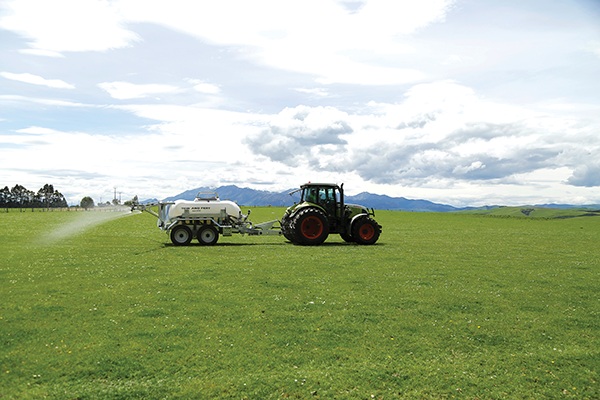By ELAINE FISHER
New Zealand’s primary industries are among the most innovative in the world, yet many farming families don’t have access to technology because of poor or non-existent internet coverage, says Rural Women New Zealand (RWNZ) board member Claire Williamson of Cambridge.
Lack of connectivity affects every aspect of their business and personal lives and in some cases, its absence can be fatal.
“I personally know of two fairly recent cases where someone has died following a farm accident they may have survived if they had been able to use a cellphone to call for help and that’s heartbreaking.”
Angela McLeod, RWNZ Manager, Policy and Leadership Development, says the people who live, work and play in those parts of the country without internet, or with poor cellular coverage, are disadvantaged. “Around 50% of New Zealand’s geography doesn’t have adequate cellular connection,” she says.
In its manifesto RWNZ says: “The lack of high-speed quality and affordable telecommunication services in rural New Zealand creates inequity between urban and rural communities. This inequity hinders rural businesses by leaving them unable to undertake basic tasks online and delayed access to resources and information making them less efficient and competitive.
“Unstable connectivity is also a critical safety issue in the event of an emergency, accident, crime or adverse event. Large areas of rural New Zealand still do not have mobile phone coverage and are especially vulnerable in a crisis situation. Lack of internet connectivity impedes educational opportunities for rural students.”
A recent “Quality of life” research report highlighted rural connectivity as the number one concern for RWNZ members. In fact, says Angela, advocating for better connectivity in rural communities has been among the organisation’s goals since it was founded in 1925. “Back then of course it wasn’t about the internet, but about installing phone lines to every home.”
While technology has changed dramatically from party-lines and wall phones, the connectivity issues for rural residents remain the same and many are still being left behind.
“Connectivity is an issue we raise every opportunity we get,” Angela says. “We recently met with the Minister for Digital Economy and Communications, David Clark, where we raised the issue again, and he listened. We believe the Government has got to commit to ensuring rural people are connected digitally.
“Internet providers and decision makers, including Government, need to understand rural New Zealand in order to rural-proof their policies and plans and ensure digital inclusion for everyone.”
One way of doing that is to engage with organisations like RWNZ which know the issues rural families and businesses face, however, Angela and Claire acknowledge there are barriers for internet providers to overcome too.
“The telcos say big cellphone towers are really expensive to install and run because they need power to the towers and getting that to them in rural locations can be very expensive,” Angela says. “Someone has to pay for that cost and I think there may be an aversion to the thought that urban cellphone users might have to subsidise rural users so that the cost can be similar.”
“If the Government’s goal is digital inclusion for all, then the Government may have to cover the extra expense of delivering connectivity to rural areas so that urban and rural customers pay a similar amount for the service,” Claire says.
The cost of internet connection is a barrier for many rural families, who often pay a third more to double the monthly fees of urban residents. Claire says even at the extra cost, those users may receive less data and coverage can be poor or patchy.
There are options offered through providers other than the big telcos including through independent companies, collectively known as WISPs – or Wireless Internet Service Providers. They provide internet connectivity by fixed wireless, mostly in regional or rural areas where mainstream telecommunications companies don’t go. WISPs connect to a fibre optic link at a central point (this is known as “backhaul”), install a series of fixed wireless receivers and transmitters on hilltops or high buildings, and bounce the wireless signal across a series of these sites to a cluster of end users in a rural area.
Claire says this service only operates in ‘line of sight’.
“However, where these services work, those companies are excellent. They really understand the customers they are serving, and the challenges they have to meet.”
And then there is another disrupter on the scene – Starlink, from SpaceX which is building rockets and spacecraft to deploy what it claims is the world’s most advanced broadband internet system which is now available to some consumers in NZ.
“One of our RWNZ board members in the South Island says sometimes Starlink is amazing and sometimes it’s so bad she can’t use it,” says Claire.
As technology advances, including from providers like Starlink, fewer resources will be invested into maintaining the up to 50-year-old phone systems and lines which still account for the only connection some rural residents have.
Angela and Claire say in some places there’s so much interference on phone lines it’s almost impossible to hold a conversation and there are only a handful of technicians left who know how to maintain and repair the systems.
Farmers who can’t reliably access the internet are unable to enhance their business and production by incorporating smart technology into their livestock and pasture management, and now many are concerned they won’t be able to pay their bills, because banks are doing away with cheques.
“Rural residents don’t want to retain cheques, (until there is a better alternative), because they are technology dinosaurs – it’s because so many people in rural areas don’t have internet connection and simply can’t use on-line banking,” Angela says.
A recent RWNZ’s survey of members showed the main use of cheques was for paying monthly bills, purchasing farm supplies, and paying tax. More than 70% of respondents voiced concern over the phasing out of cheques; 42.5% of respondents said they still wrote out cheques for purchases and expenses.
Of those who did use cheques, 75.2% said they posted them to make their payments. Connectivity is no longer “nice to have”. It is vital to ensure farming and rural families and businesses aren’t left behind in the brave new world of smart farming, online banking and the Internet of Things.
Rural Connectivity:
Recommended actions:
- Provision of nationwide access to affordable, quality connectivity by future proofing our communications networks;
- Share information on ways to increase rural connectivity and regular, informative progress reports by government on the rural connectivity roll-out;
- Support research into new and innovative ways to provide quality, affordable connectivity to rural and remote areas.





